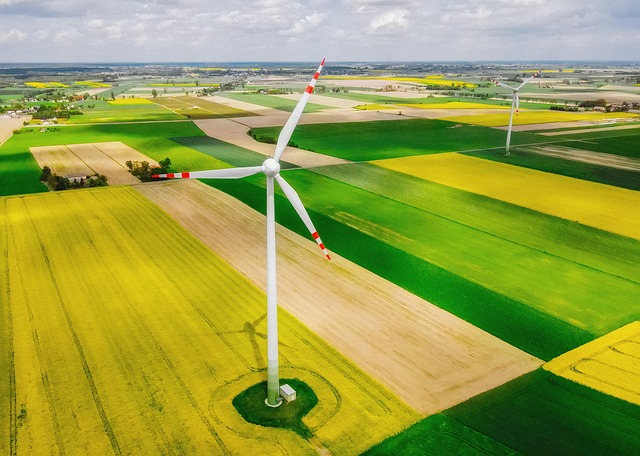
Harnessing the Power of Nature: The Future of Clean Energy
The urgency of transitioning to clean energy sources has never been more apparent. As global energy consumption continues to rise, the adverse effects of fossil fuel dependency—climate change, health problems, and geopolitical conflicts—call for a reevaluation of our energy production methods. To meet the demands of modern civilization while preserving the planet for future generations, investing in renewable energy sources is not only essential—but inevitable. This article delves into the mechanisms, advantages, and visions for the future of clean energy, emphasizing how harnessing the power of nature can pave the way to a sustainable and prosperous world.
Understanding Clean Energy
Clean energy refers to energy derived from sources that do not produce significant greenhouse gases or pollutants. These energy sources can include solar, wind, hydroelectric, geothermal, and biomass. Unlike fossil fuels, clean energy is regenerative, meaning it can be replenished naturally over time, which makes it a sustainable option for powering our world.
The transition toward clean energy requires a comprehensive and multifaceted strategy, incorporating technological innovations, changes in policy, and community engagement. This transition is not only about replacing fossil fuels but about reimagining our relationship with energy and the environment.
The Role of Renewable Energy Sources
Each clean energy source contributes uniquely to the portfolio of renewable energy options. Understanding how these sources work is key to harnessing their potential effectively.
Solar Energy
Solar energy harnesses sunlight through photovoltaic (PV) cells or solar thermal systems. With annual global solar radiation estimated at around 173,000 terawatts, capturing even a fraction of this energy could supply the world’s energy needs. The advancements in solar panel technology, such as higher efficiency rates and improved energy storage systems, have made solar energy increasingly accessible and cost-efficient.
Wind Energy
Wind energy captures the kinetic energy generated by wind through turbines. Wind farms, both onshore and offshore, have proliferated in recent years, signaling a shift in how energy can be generated sustainably. The potential for wind energy is vast, particularly in coastal areas and places with consistent wind patterns, contributing significantly to the reduction of carbon emissions.
Hydropower
Hydropower generates electricity by using flowing water to turn turbines. While large dams have been a traditional approach, smaller, run-of-the-river systems are gaining popularity. These systems minimize environmental impacts while still providing a reliable energy source. However, debates around the ecological consequences of large hydropower installations highlight the need for careful planning and innovation in dam construction and water resource management.
Geothermal Energy
Geothermal energy utilizes heat from the Earth’s core to generate electricity and provide direct heating. Areas with volcanic activity, such as Iceland and parts of the United States, have exploited this sustainable energy source effectively. Advances in drilling technology have made it possible to tap into geothermal resources in less geothermally active regions, enhancing its viability.
Biomass Energy
Biomass energy comes from organic materials such as plant and animal waste. It can be converted into biofuels, electricity, or thermal energy. When managed responsibly, biomass can be a net-zero carbon source, supporting a circular economy. However, it is crucial to ensure that biomass harvesting does not lead to deforestation or biodiversity loss.
The Advantages of Clean Energy
The global shift toward clean energy brings substantial economic, environmental, and social benefits. These advantages are multi-dimensional, influencing various aspects of life and the economy.
Environmental Benefits
One of the most compelling reasons to transition to clean energy is its capacity to mitigate climate change. By emitting little to no greenhouse gases, renewable energy sources significantly decrease air pollution and greenhouse gas levels in the atmosphere. This shift can lead to healthier ecosystems, improved public health, and a considerable reduction in the impacts of climate change.
Economic Growth
The clean energy sector has proven to be a powerhouse for job creation. From manufacturing to installation and maintenance, renewable energy creates jobs across diverse skill levels. As technology advances, roles in research and development for clean energy become increasingly important. Investing in this sector also stimulates local economies by reducing energy costs and increasing energy independence.
Energy Security
Renewable energy contributes to national energy security by diversifying energy sources and reducing dependency on imported fuels. Local energy production protects nations from price volatility and geopolitical tensions. Moreover, with advancements in energy storage technologies, having reliable backup systems becomes increasingly feasible.
Climate Resilience and Innovative Technologies
The current climate crisis necessitates that communities not only transition to clean energy but also develop resilience against its impacts. This is where innovative technologies play a crucial role. Emerging solutions include energy-efficient appliances, demand response technologies, and smart grids.
Smart grids enhance the efficiency of the electricity supply by optimizing the distribution of energy resources. They integrate renewable energy sources into the existing grid, which can balance supply and demand effectively. Innovations such as this enable communities to adapt to climate variability and ensure a stable energy flow, even during adverse weather events.
Policy, Community Engagement, and the Path Forward
A successful transition to clean energy requires support at multiple levels. Effective policies must be established to encourage investment in renewable technologies. Governments can implement tax incentives, grants, and subsidies, fostering an environment conducive to innovation while holding polluters accountable.
Community engagement is equally vital. Educational initiatives, workshops, and local renewable energy projects can empower communities to participate actively in the transition. Programs that foster collective investments in solar panels or community-owned wind farms can create a sense of ownership and shared responsibility among residents.
The Future of Clean Energy
Looking ahead, the combination of technological advancements, favorable policies, and community engagement will spur the growth of clean energy far beyond today’s capabilities. Visionary projects, including widespread microgrid implementations, decentralized energy systems, and smart energy management tools, promise to redefine energy landscapes globally.
Moreover, breakthroughs in energy transformation technologies, such as hydrogen production via electrolysis powered by renewables, could unlock new pathways for sustainability. Research in energy storage technologies will continue to be paramount, ensuring that the surplus energy generated during peak production can be stored and utilized during times of high demand.
As the global community embraces the urgency of climate change, the future of clean energy rests in the hands of innovators, policymakers, and engaged communities. By harnessing the diverse resources that nature provides, we can create a sustainable energy landscape that supports both our current needs and the needs of generations yet to come.
Conclusion
The transition to clean energy represents not just an environmental imperative but also an economic opportunity for growth and resilience. By harnessing the power of nature, we can mitigate climate change, create millions of jobs, and ensure a more secure energy future. The path ahead will undoubtedly involve challenges, but through collaborative efforts and innovative solutions, a sustainable energy future is within reach.



